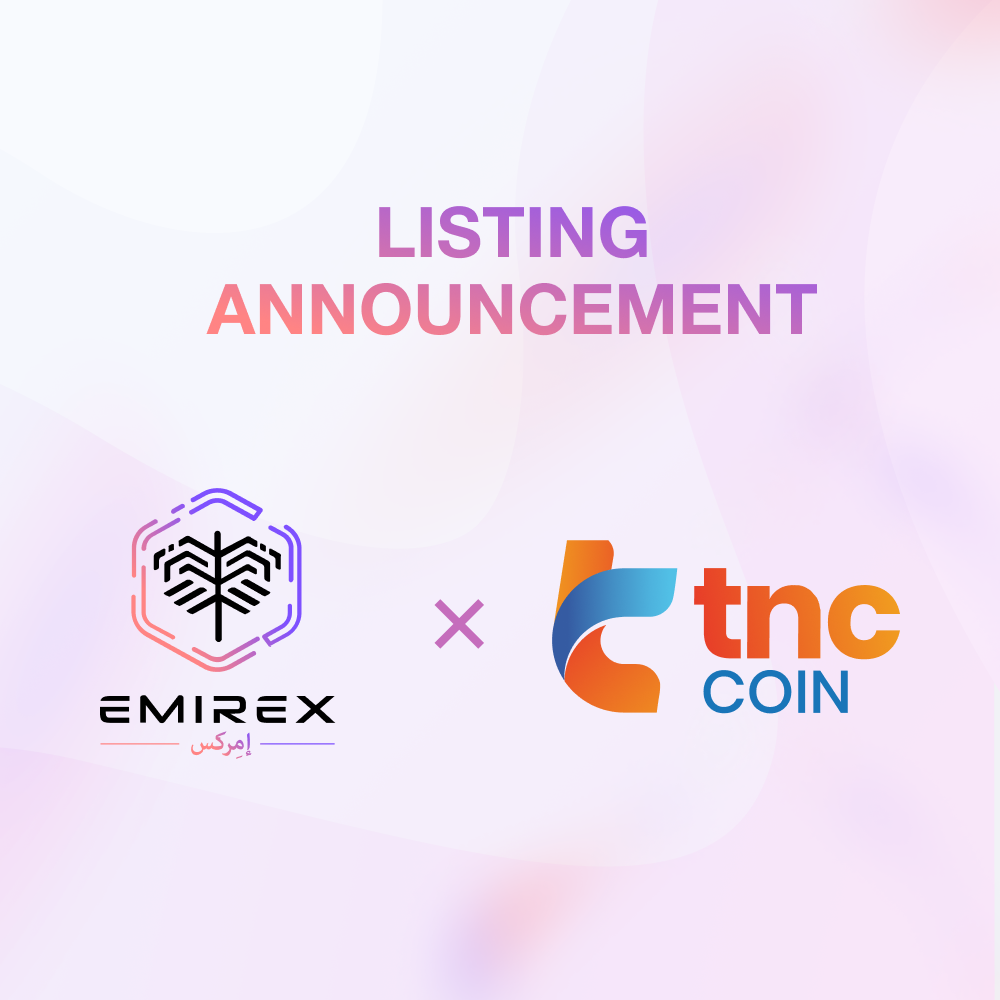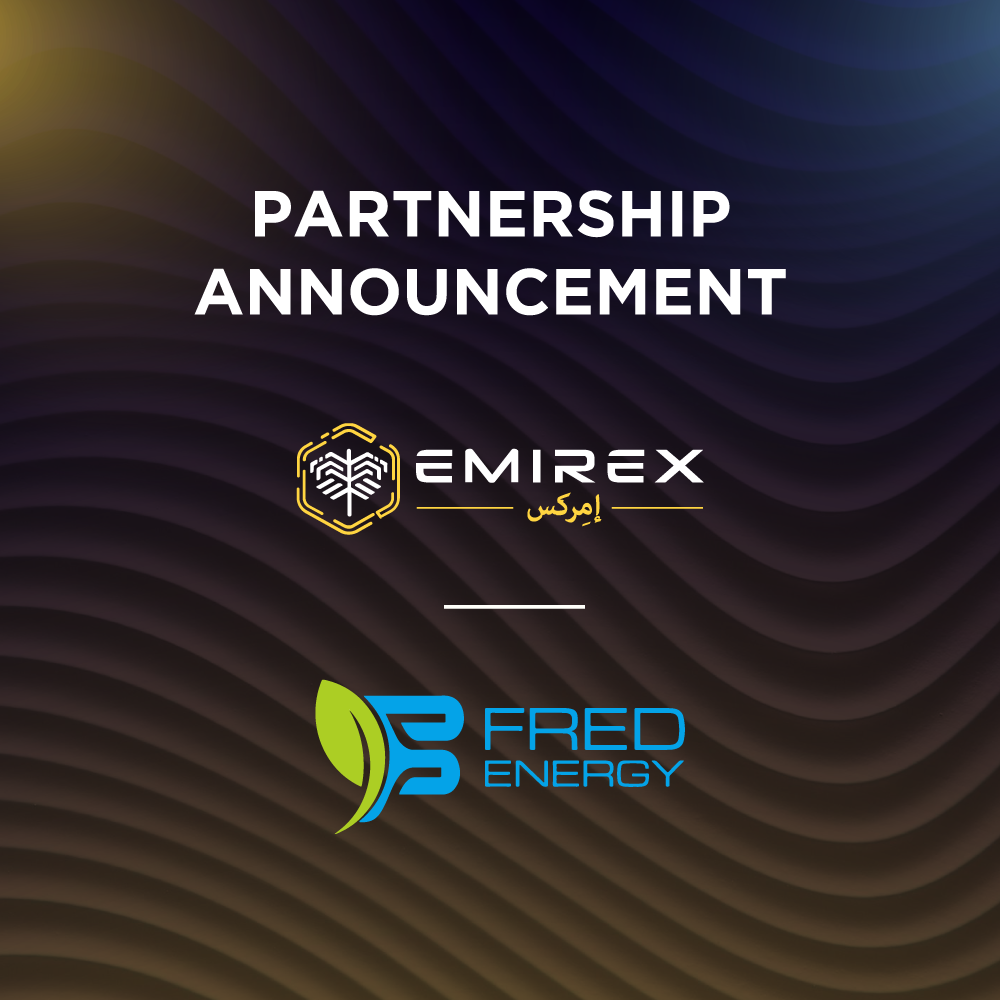Universal Market Access (UMA) is a protocol for building synthetic assets. On 9th of October, UMA was listed for trading on the Emirex exchange. Current available trading pairs on the Emirex exchange: UMA/USDT, UMA/BTC
Universal Market Access is a DeFi protocol for the creation of synthetic assets based on the Ethereum blockchain for counterparties to digitize and automate any real-world financial derivatives.
UMA is a native token primarily used for protocol governance and grants the token holder the right to vote on governance decisions such as upgrades to the Data Verification Mechanism (DVM), creating new synthetic assets, and settling disputes on liquidated collateral.
The UMA system consists of three elements: a structure for creating synthetic contracts (Token Facility), a data verification mechanism (oracle), and a control protocol.
When a voting process takes place on the network, an inflationary reward equal to 0.05% of the current UMA supply is distributed among active voters proportionate to their current stake.
CryptoCurrency Profile
- Token Standard - ERC-20
- UMA Price - $8,65 USD
- UMA ROI - 507,01%
- Market Rank - #39
- Market Cap - $479 733 845 USD
- 24 Hour Volume - $22 824 913 USD
- Circulating Supply - 55 455 184 UMA
- Total Supply - 101 104 959 UMA
- All Time High - $27,63 USD (Sep 01, 2020)
- All Time Low - $1,16 USD (May 25, 2020)
About Project
UMA (Universal Market Access) is a decentralized financial platform based on the Ethereum blockchain. It is an open-source protocol aimed at creating synthetic ETH/BTC contracts that are supported by economic incentives. The main goal of the project is to make financial markets open and accessible to everyone.
UMA builds financial infrastructure on Ethereum. Specifically, there are two things:
- The Data Verification Mechanism (DVM), a decentralized oracle service;
- Priceless financial contract designs, which can be used to create synthetic tokens.
UMA allows any two counterparties to interact, creating their financial contracts based on blockchain technology and smart contracts, eliminating the need to trust anyone to store assets.
The UMA contract has the following main components:
- Public addresses of all contractors;
- Margin accounts for each of them;
- Economic conditions for the cost calculation;
- Smart contract functions to maintain margin balances;
- Oracle to provide secure and verified data from outside the chain.
These components help to ensure that the contract can enforce agreed rules most honestly and securely.
The process is compared to derivatives trading. UMA synthetic tokens are traded like any Ethereum based token until the contract is executed. The stake placed by users in DAI stablecoins is then distributed to token holders and stakers.
The contract also contains a penalty for failure to fulfill obligations. If the margin falls below the minimum required level, then a restraining mechanism will be triggered to prevent the non-fulfillment of margin requirements.
UMA token
UMA non-mineable cryptocurrency is a utility token of the protocol, designed to build synthetic assets. The token is used to manage the network and allows holders to vote for certain changes in the protocol.
Token holders have the following privileges:
- Voting on price metrics if requested from financial contracts. Decentralized oracles (DVM) are used in the process.
- Managing the architecture of the protocol by voting "for" or "against" certain system changes.
- Receiving rewards for active participation in the voting process. The amount is distributed among all token holders depending on the volume of assets held.
Participants who seek to receive a reward and have UMA tokens on their account perform three main actions:
- Close contracts with a proven lack of security (rare option).
- Confirm new price IDs.
- Register or unregister templates used to create contracts.
- Correct the parameters of DVM decentralized oracles and update their protocol to make it more accurate and secure.
Recent News
- 23 Jul 2020: Introduced the first yield dollar token, yUSD-SEP20;
- 28 Jul 2020: Announced the launch of the $UMA Liquidity Mining pilot;
- 28 Aug 2020: Announced the Liquidation Opportunity Program;
- 07 Sep 2020: Announced the Yield Dollar on renBTC;
- 09 Sep 2020: Announced the Voter Gas Fee Rebate Program;
- 15 Sep 2020: Sponsored Binance’s premier global esports tournament;
- 08 Oct 2020: Became a sponsor of the ETHonline Hackathon;
- 03 Nov 2020: Announced Developer Mining: Allowing devs to earn ownership in a network that they help create;
- 11 Nov 2020: Defined the Purpose of Risk Labs Foundation and uLABS.
Roadmap
In the short term, the project is going to disclose synthetic tokens that the user base is developing. The last year, UMA held a series of POCs to confirm user interest in synthetic tokens, and many are now preparing for a wider release.
UMA token holders control the UMA ecosystem in the form of holder-based governance. Over time, the project seeks to reduce the role of core developers and help the community organize itself to support and create what it needs.
In the long run, UMA sees the DVM securing all kinds of different financial contracts and the ability for everyone who can access DeFi to also have Universal Market Access.
Perspective
The UMA protocol opens up enormous prospects in terms of synthesizing assets and is one of the representatives of the now popular DeFi sector.
The advantages of the project are the following:
- Providing a variety of synthetic assets.
- Management opportunities for token holders and rewards.
- Reduced dependence on oracles, which reduces the risk of external attacks.
- Investor interest, including Coinbase and a number of other large companies.
UMA has already partnered with many well-known companies in the crypto space. Besides, institutional investors are interested in the project, opening up vast prospects for further development.
Social Media
Website: https://umaproject.org/
Twitter: https://twitter.com/umaprotocol
Medium: https://medium.com/uma-project
GitHub: https://github.com/umaprotocol
Explorer: https://etherscan.io/token/0x04Fa0d235C4abf4BcF4787aF4CF447DE572eF828






